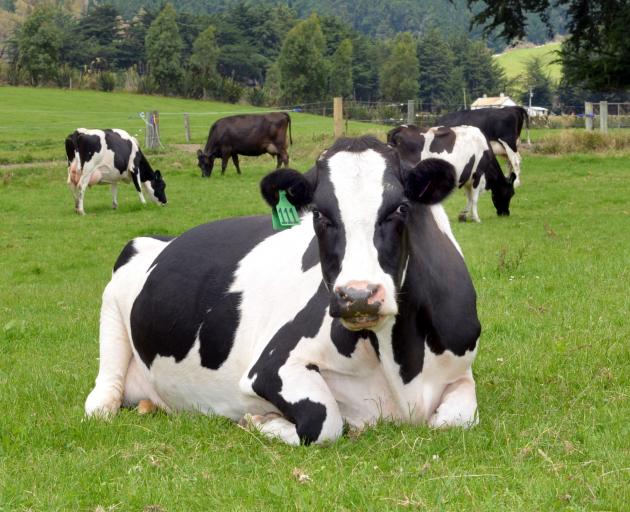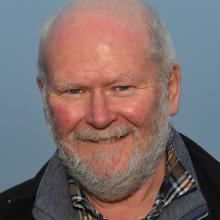
At the time of writing, the formation of a Government that will oversee our responses to climate change has yet to be determined, Colin Campbell-Hunt says.

Regardless of which political party takes power, the biggest challenge for New Zealand will continue to be the emissions of greenhouse gases (GHG) from agriculture, which now make up half of all the country's emissions.
And when we say agriculture, the main challenge arises from emissions of methane from our huge herds of grass-fed ruminants (dairy and beef cattle, sheep and goats) , from emissions of the nitrous oxide released from fertilisers, and from the carbon dioxide (CO2) emitted when carbon-based energy sources are used on farm and in downstream processing and transport.
A recent international report has taken an exhaustive look at the impact of grass-fed ruminants on the drivers of climate change. The report is produced by the Food Climate Research Network (FCRN), a collaboration of researchers from the United Kingdom, Holland, Switzerland, Sweden and Australia, and led by Oxford University.
On a global scale, GHG emissions from livestock supply chains make up about 14% of the 49 billion tonnes of CO2 equivalent gases we put into the atmosphere every year. The bulk of these emissions occur at the agricultural stage, and 80% of these are attributable to ruminants. The report assesses what can be done to reduce the impact of ruminant-based agriculture on the climate, focusing in particular on agricultural systems where ruminants are fed on grass, as in New Zealand.
The bad news is that the digestive system of ruminants emits methane, a GHG that is 25-times more powerful than CO2 over its first hundred years in the atmosphere and 80-times more powerful over the shorter period of 20 years or so in which we hope to avoid runaway and irreversible changes to the climate. And ruminants emit a lot of the stuff - according to FCRN, about one-third of all methane emissions from human activity.
On the positive side, the grass that ruminants eat sequesters (captures) CO2 into the soil, and the urine and dung from grazing animals acts as a natural fertiliser to enhance grass growth and carbon capture. Peer-reviewed science estimates of carbon capture from improved grazing management can range from one-fifth of a tonne per hectare per year to nearly four tonnes. This is a sizeable offset to the methane emitted by the ruminants that feed on the grass.
However, soil will only absorb carbon up to some equilibrium level, and that level varies enormously depending on soil texture, rainfall, grass type, grazing intensity, and years in production. For soils that have already reached that equilibrium - as we might expect to be true in New Zealand - the report concludes that ``good grazing management will not sequester much, if any, more carbon''. Attempts to boost grass growth (and with it carbon capture) by applying ever more nitrogen-based fertilisers merely adds another GHG to agricultural emissions: nitrous oxide (N2O), a gas that is a whopping 265-times more powerful than CO2 as a driver of global warming and lasts in the atmosphere for over a century.
Ultimately, grass-fed ruminants will have to compete with other land uses in order to provide the food we need. As concern for a changing climate rises, pressures will also increase to get the food we need from a smaller area of land and free up land for carbon capture uses such as forestry. A 2016 study looked at a number of different ways that Western Europe could feed itself in the year 2050, the land area required for each, and the carbon-capture that would result from converting land use to sequestration.
If Europe was to continue with its current dietary habits that are high in meat consumption, and produce its food (with no imports) the way it does now, by 2050 it would not have enough agricultural land to meet the need. Improved yields and reductions in food waste would make it possible for Western Europe to feed itself, especially if the meat content of diets were reduced. But unless diets change, Europe's GHG emissions from food production would barely change from the 400 million tonnes pa now.
To reduce agricultural emissions in 2050 by 80% below 1990 levels, all meat would have to be removed from the Western European diet, although farmed fish, artificial meat and dairy products could be retained. Substituting these food sources for meat would liberate as much as 70%-80% of the land now devoted to producing meat, land that could be used to plant trees and absorb carbon.
A similar analysis of food sources, land use and GHG emissions for other regions would be instructive - especially for our largest offshore market China. Although dairy farming has become a dominant use of land in New Zealand, and hence also the dominant producer of GHG, it seems that the milk it produces may continue to have a place in the global diets of 2050. But other forms of livestock farming may not enjoy the same future.
The FCRN report concludes that ``while grazing livestock have their place in a sustainable food system, that place is limited ... the continuing rise in production and consumption of animal products is cause for concern. With their growth, it becomes harder by the day to tackle our climatic and other environmental challenges''.
- Colin Campbell-Hunt is an emeritus professor at the CSAFE Centre for Sustainability, University of Otago. Each week in this column, one of a panel of writers addresses issues of sustainability.











